Fishing for bonefish is a thrilling and rewarding experience for anglers of all skill levels. Known for their speed and elusive nature, bonefish offer a unique challenge that requires both patience and skill.
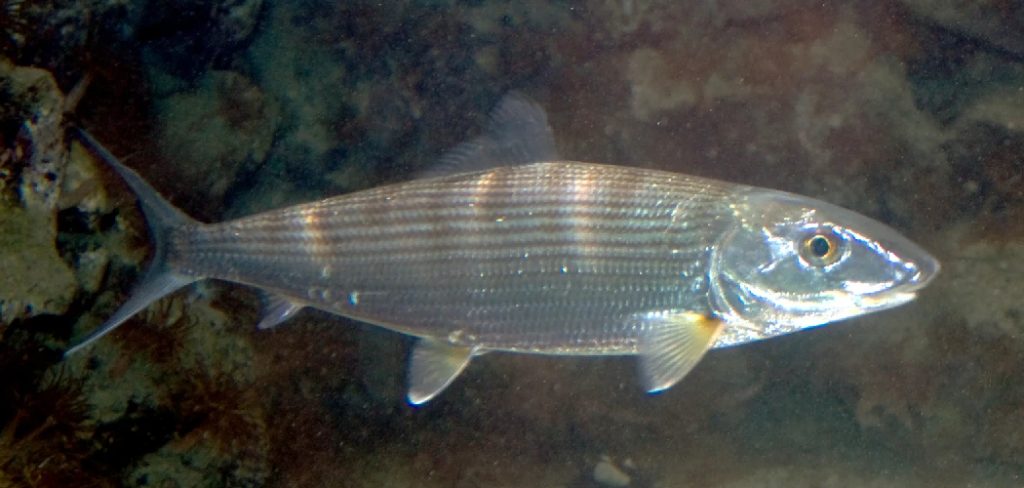
Found primarily in shallow tropical waters, these prized game fish are often sought after for their fighting spirit once hooked. This guide explores the key aspects of how to fish for bonefish. Whether you’re a seasoned angler or a beginner, understanding the techniques and strategies for successful bonefishing will help you make the most of your time on the water.
What Are Bonefish?
Bonefish, scientifically known as Albula vulpes, are sleek, silver-colored fish often referred to as the “gray ghosts” of the flats due to their elusive nature and ability to blend into their surroundings. They are predominantly found in warm, shallow tropical and subtropical waters, such as the Caribbean, the Florida Keys, and the Bahamas.
Bonefish are typically small to medium in size, averaging 1-15 pounds, though much larger specimens have been recorded. They are a unique species prized among anglers for their speed, strength, and agility, which make them a challenging yet rewarding catch. Besides their sporting appeal, bonefish also play a critical role in the ecosystems they inhabit, helping to maintain the balance of marine life in coastal environments.
Preparing Your Gear for Bonefishing
Before heading out to fish for bonefish, it’s essential to prepare the right gear to ensure a successful and enjoyable experience. Start with a quality fly rod or spinning rod, ideally one designed for saltwater fishing that can handle the strength and speed of bonefish.
Pair this with a reel that has a smooth drag system to manage their powerful runs. Use fly patterns or lures that mimic the bonefish’s natural prey, such as shrimp, crabs, or small baitfish. Don’t forget essentials like polarized sunglasses to reduce glare and help spot fish in the water, as well as lightweight clothing to stay comfortable under the tropical sun. Preparing thoroughly will set the stage for an unforgettable fishing adventure.
10 Methods How to Fish for Bonefish
1. Research Their Habitat
Bonefish are typically found in shallow, sandy flats, mangroves, and seagrass beds in tropical and subtropical regions. They are most active during tidal changes when they move into shallower areas to feed. Research the area where you plan to fish, noting tidal patterns, water depth, and the presence of their preferred habitats. Understanding their environment is crucial for locating bonefish effectively.
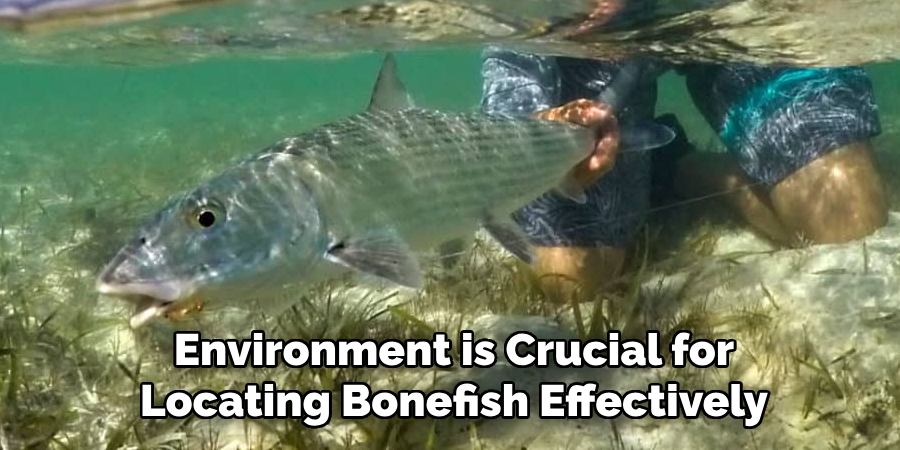
2. Use the Right Gear
Selecting appropriate gear is essential when fishing for bonefish. A lightweight fly rod, typically 7 to 9 weight, paired with a high-quality reel with a strong drag system, is ideal for handling their speed and strength. Use floating fly lines with a tapered leader for precise casts. For spin fishing, a medium-light rod and reel combo with 6-10 lb test line will work well. Equip yourself with gear that allows for accurate presentations and quick retrievals.
3. Master Fly Selection
Bonefish are opportunistic feeders that primarily consume small crustaceans like shrimp and crabs. When fly fishing, choose patterns that mimic their natural prey, such as Crazy Charlies, Gotchas, or shrimp imitations in natural colors like tan, pink, or brown. Ensure your flies are tied on saltwater hooks to resist corrosion and maintain sharpness.
4. Perfect Your Casting Technique
Accurate casting is critical when targeting bonefish. Practice delivering your fly or bait quietly and precisely to avoid spooking these wary fish. Aim for a spot ahead of the fish’s path and let the fly or bait settle naturally. In windy conditions, learn to adjust your casting angle and power to maintain accuracy. Consistent practice will improve your chances of landing a bonefish.
5. Adopt Stealthy Approaches
Bonefish are highly sensitive to movement and noise, making stealth essential. Approach the flats quietly, avoiding splashing or abrupt movements. If wading, shuffle your feet gently to prevent alarming the fish. Wear neutral-colored clothing to blend in with the surroundings, and minimize reflections from sunglasses or gear. A subtle approach ensures you remain undetected.
6. Learn to Spot Bonefish
Spotting bonefish requires keen observation skills. Look for signs such as tailing (when their tails break the water surface), wakes caused by their movement, or flashes of their silvery bodies as they turn. Polarized sunglasses are invaluable for reducing glare and improving underwater visibility. With experience, you’ll develop an eye for detecting bonefish in different conditions.
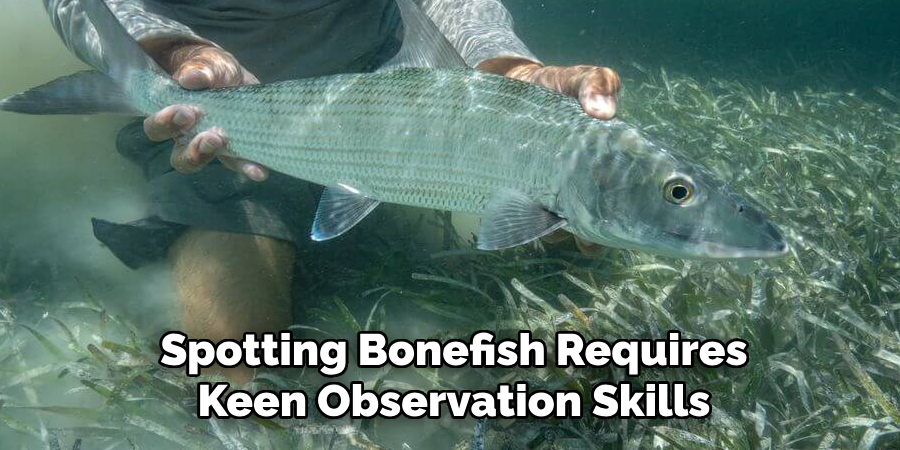
7. Time Your Fishing Expeditions
Timing plays a significant role in bonefishing success. Target them during incoming or outgoing tides, as they move into shallower flats to feed. Early morning and late afternoon are also productive times, as the lower sun angle improves visibility and reduces the fish’s wariness. Adjust your schedule to align with optimal feeding times.
8. Use Live Bait for Spin Fishing
If you prefer spin fishing, live bait such as shrimp, small crabs, or baitfish can be highly effective. Rig the bait on a light jig head or circle hook and present it naturally in the water column. Cast ahead of the fish and allow the bait to drift into their feeding path. Bonefish often strike live bait aggressively, providing an exciting challenge.
9. Practice Quick Hook Sets and Retrievals
Bonefish are known for their speed and power, often making long runs after being hooked. When you feel a strike, set the hook quickly but firmly to ensure a solid connection. Allow the fish to run while keeping steady pressure on the line. Use your reel’s drag system effectively to prevent break-offs. Quick reactions and proper technique are key to landing these spirited fish.
10. Hire a Local Guide
For beginners or those unfamiliar with the area, hiring a local fishing guide can greatly enhance your experience. Guides possess intimate knowledge of the flats, bonefish behavior, and the most effective techniques. They can assist with spotting fish, choosing flies or bait, and improving your presentation. A guided trip increases your chances of success and provides valuable insights into bonefishing.
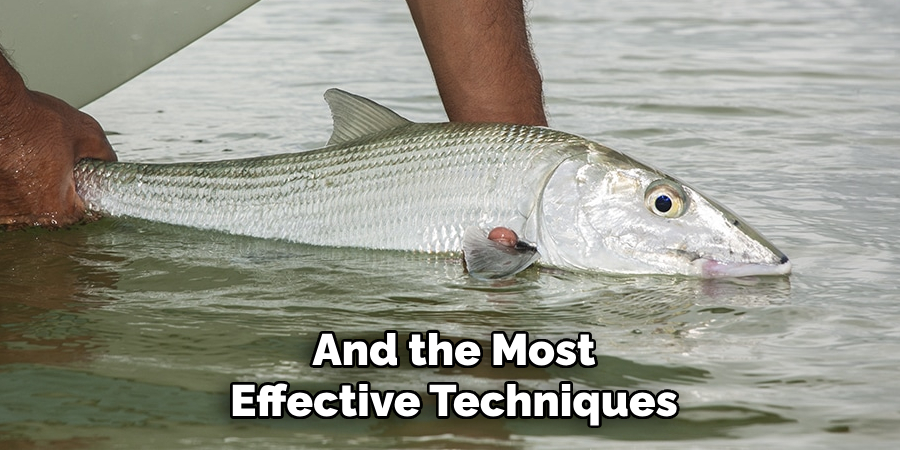
Maintenance and Upkeep
To ensure your bonefishing gear remains in top condition and is ready for every adventure, proper maintenance and upkeep are essential. Start by thoroughly rinsing all gear, including rods, reels, flies, and lines, with fresh water after each trip to remove salt and prevent corrosion. Pay special attention to the reel’s drag system by cleaning and lubricating it periodically to maintain smooth performance.
Inspect your lines and leaders for any signs of wear, such as fraying or weakening, and replace them when necessary. Store rods and reels in a cool, dry place, and avoid high humidity or direct sunlight, which can damage components. Additionally, regularly sharpen hooks on your flies and lures to ensure optimal penetration when setting the hook. By taking these proactive steps, your equipment will remain durable and reliable, maximizing your success on future bonefishing expeditions.
Tips for Achieving the Best Results
When aiming for success in bonefishing, attention to detail and preparation can make a significant difference. Here are some key tips to help you achieve the best results:
Research Your Destination
Learn about the specific flats or fishing areas you’ll be visiting, including tidal patterns, water temperatures, and seasonal fish behavior. Each location may have unique characteristics that influence your strategy.
Stay Patient and Observant
Bonefishing requires focus and patience. Spend time scanning the water carefully for signs like movement, shadows, or tailing fish. Staying calm and observant increases your chances of spotting and properly targeting fish.
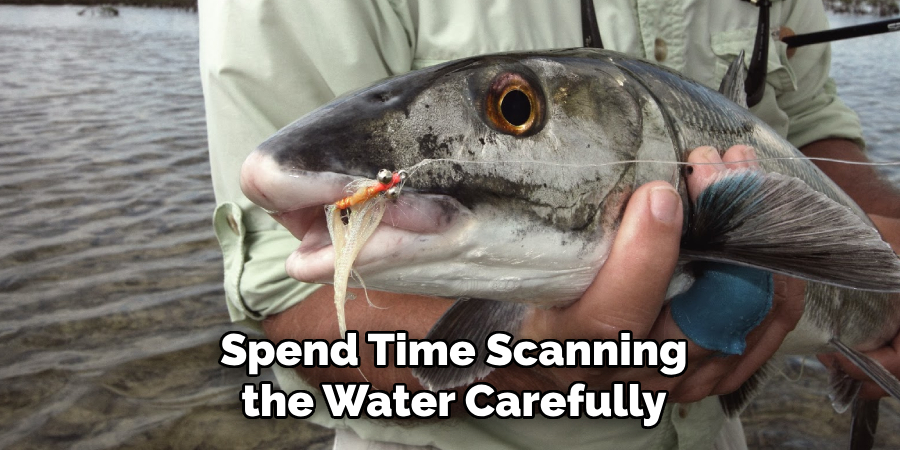
Adapt to Conditions
Adjust your approach based on factors such as wind, light levels, and water clarity. For instance, in bright sunlight, narrow your search in deeper areas where bonefish might feel less exposed, while overcast conditions can call for heightened emphasis on subtle movements.
Practice, Practice, Practice
Whether casting a fly or presenting live bait, practice your technique regularly before heading to the water. Perfect your skills for accuracy, stealth, and speed, as bonefishing often demands quick, precise, and quiet presentations.
Be Prepared for the Unexpected
Bonefish are known for their unpredictable nature and sudden bursts of speed. Have your drag system finely tuned and always be ready for a long, strong run. Maintaining control during these critical moments ensures a successful landing.
By meticulously preparing and staying adaptable, you can enhance your bonefishing experience and consistently achieve optimal results.
Conclusion
Bonefishing is a thrilling and rewarding pursuit that combines skill, strategy, and an appreciation for nature’s beauty. Success lies in careful preparation, from selecting the right gear and perfecting your casting technique to understanding their habitat and behavior. Whether you choose to fly fish or spin fish, adopting a patient and stealthy approach will increase your chances of landing these elusive fish. So, there you have it – a quick and easy guide on how to fish for bonefish.
About the Author
Jennifer Branett is the author of Fishy Kayak and an expert in fish-related fields, with over 10 years of experience. Her work blends passion for fishing with a commitment to conservation.
Educational Background
Degree: Bachelor’s in Marine Biology
Institution: University of California, Santa Barbara
Specializations: Aquatic ecosystems, fish behavior, and sustainable practices
Professional Experience
Conservation Projects:
Collaborated with local organizations to restore aquatic habitats
Developed educational programs on sustainable fishing practices
Publications:
Authored articles for fishing magazines and environmental journals
Featured speaker at fishing expos and conservation conferences
Key Areas of Expertise
Fishing Techniques:
Kayak fishing strategies
Freshwater and saltwater fishing methods
Environmental Stewardship:
Advocacy for sustainable fishing
Promoting biodiversity in aquatic environments
Awards and Recognition
Recipient of the [Specific Award Name] for contributions to marine conservation
Recognized as a leading voice in the fishing community by [Organization/Publication Name]
Community Engagement
Workshops and Seminars:
Regularly hosts events to educate anglers on sustainable practices
Engages with youth programs to inspire the next generation of fishers
Online Presence:
Maintains an active blog sharing tips, stories, and conservation efforts
Engages with followers on social media to promote fishing ethics
Personal Interests
Enjoys kayaking in scenic locations
Passionate about photography, capturing the beauty of nature
Advocates for local conservation efforts in her community
